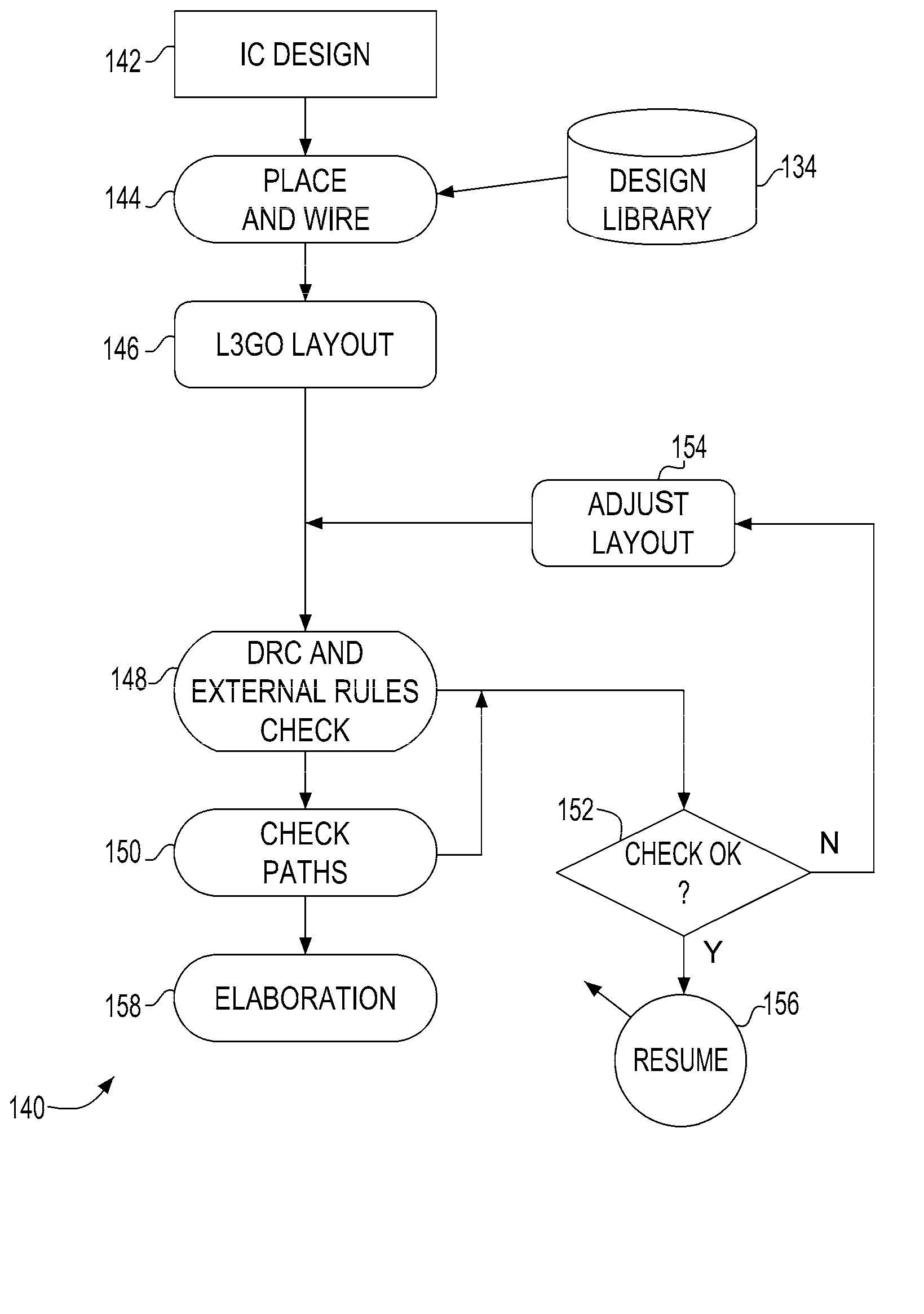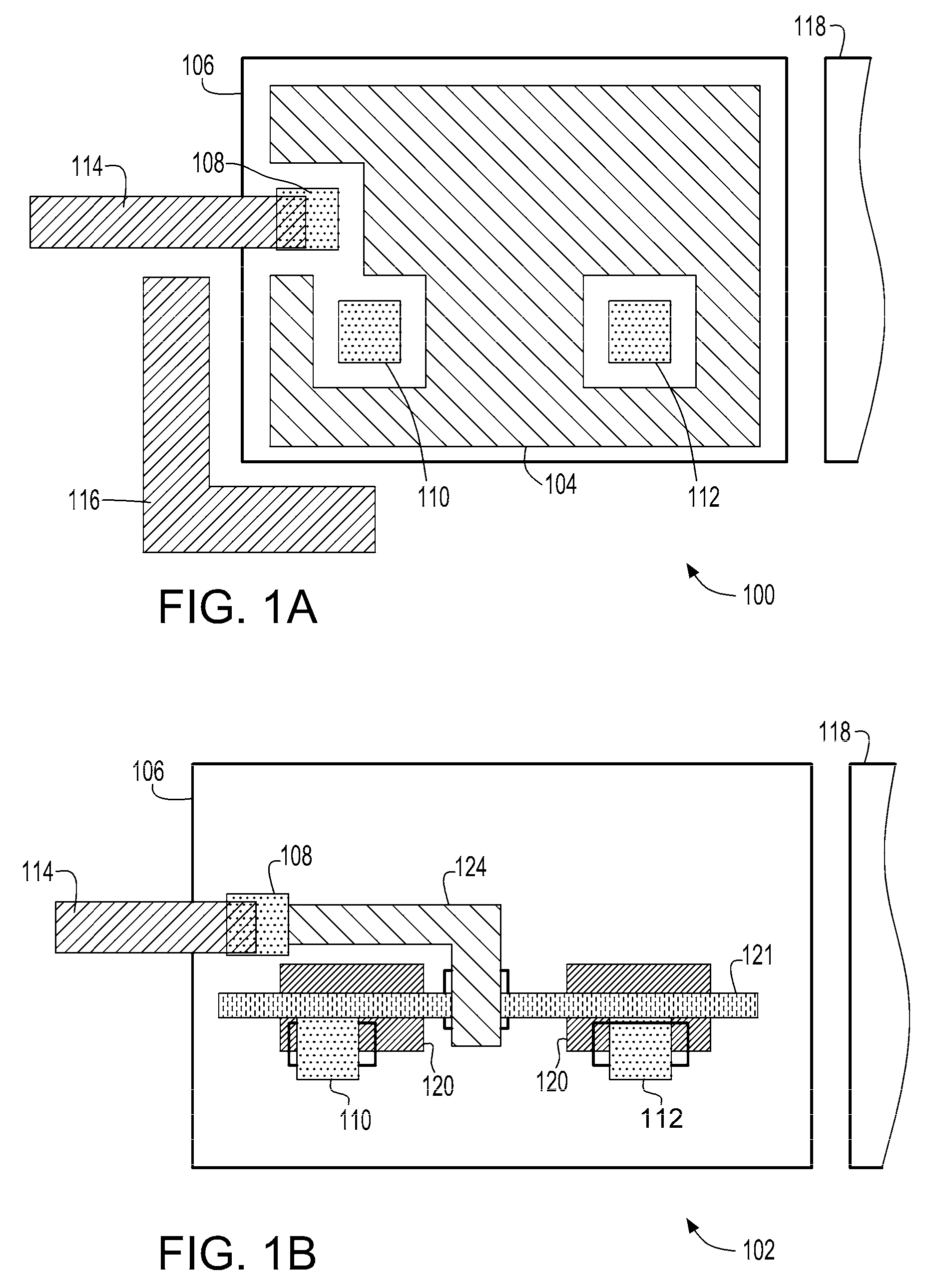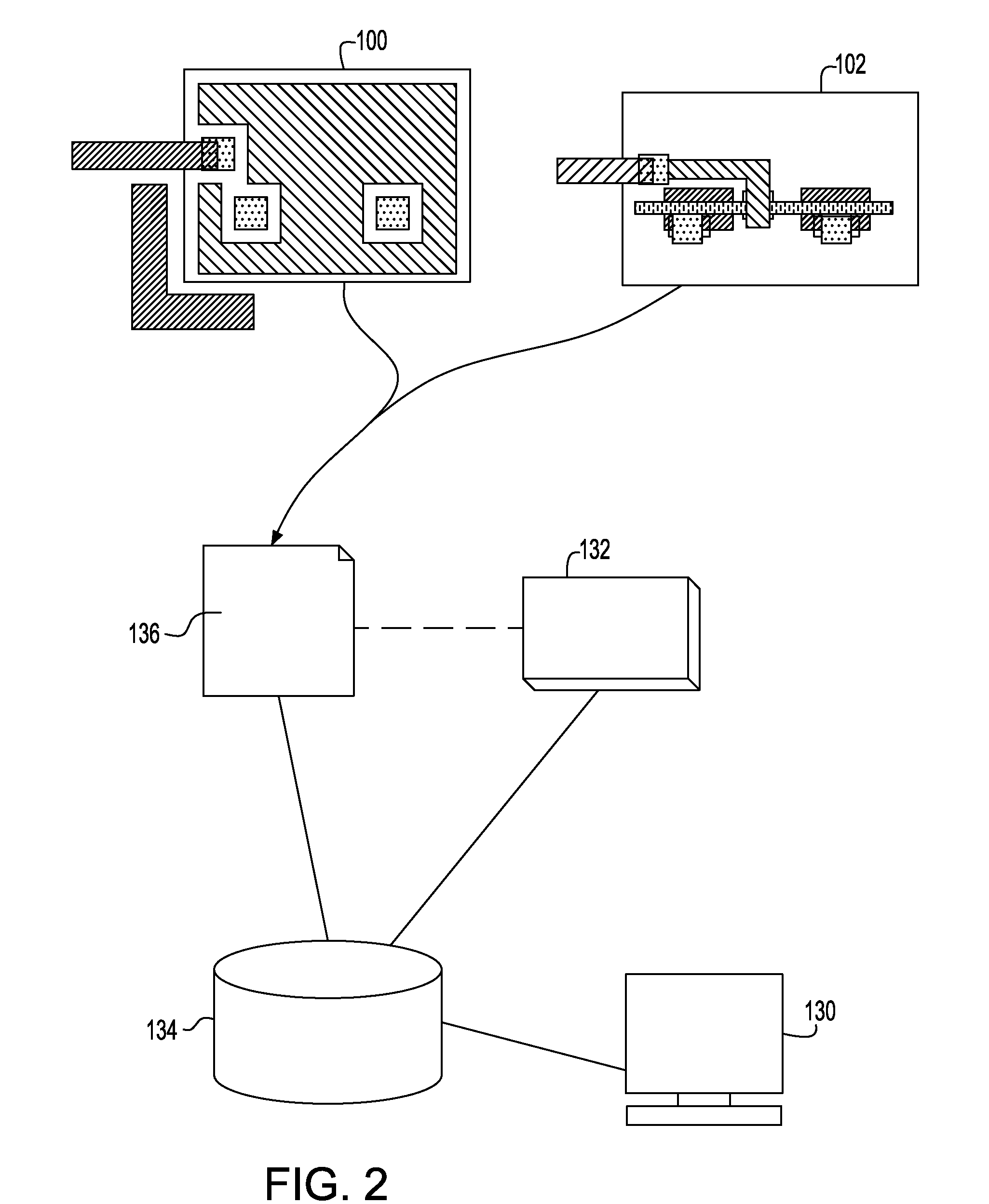Integrated circuit (IC) design method, system and program product
a technology of integrated circuits and design methods, applied in cad circuit design, program control, instruments, etc., can solve the problems of reducing chip yield, increasing the cost of generating complex masks, and chip defects, so as to improve the efficiency of layout data preparation, reduce the cost and risk of layout generation, and improve the effect of ics
- Summary
- Abstract
- Description
- Claims
- Application Information
AI Technical Summary
Benefits of technology
Problems solved by technology
Method used
Image
Examples
Embodiment Construction
[0021]Turning now to the drawings and, more particularly, FIGS. 1A-B show an example of a dual representation100, 102 of a special case cell, according to a preferred embodiment of the present invention. As used herein, a special case cell includes features that may be process dependent and that require special treatment, e.g., features-specific ground rules and checking. Thus special case cells include, for example only, Static Random Access Memory (SRAM) cells and decoupling capacitors, body contacts, diodes, polysilicon resistors, fuses, or bonding pads, e.g., Controlled Collapse Chip Connections (C4s). This list of special case cells is for example only and not intended as a limitation.
[0022]Preferably in this example, the special case cell is in an integrated circuit (IC) chip design in a gridded glyph geometric objects (L3GO) format, such as is described in U.S. Pat. No. 7,536,664, “Physical Design System And Method” to Cohn et al., assigned to the assignee of the present inve...
PUM
 Login to View More
Login to View More Abstract
Description
Claims
Application Information
 Login to View More
Login to View More - R&D
- Intellectual Property
- Life Sciences
- Materials
- Tech Scout
- Unparalleled Data Quality
- Higher Quality Content
- 60% Fewer Hallucinations
Browse by: Latest US Patents, China's latest patents, Technical Efficacy Thesaurus, Application Domain, Technology Topic, Popular Technical Reports.
© 2025 PatSnap. All rights reserved.Legal|Privacy policy|Modern Slavery Act Transparency Statement|Sitemap|About US| Contact US: help@patsnap.com



